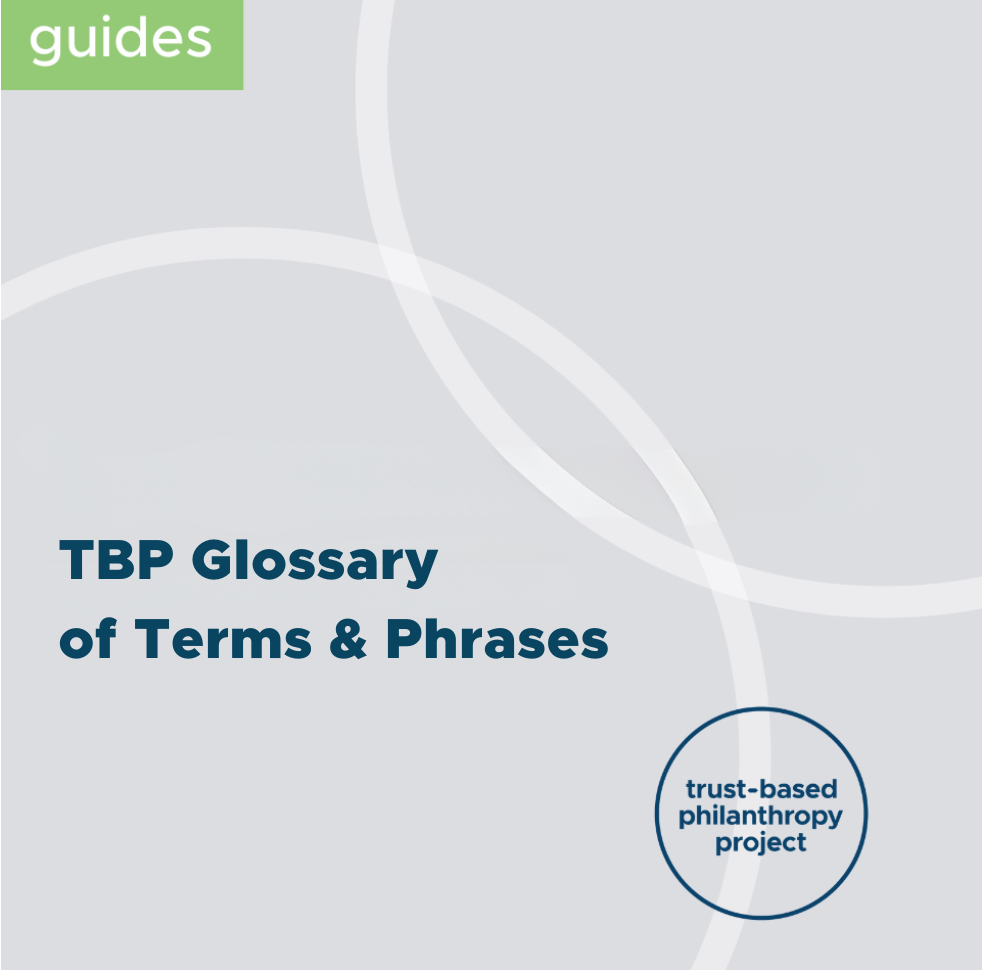
Six Practices of Trust-Based Grantmaking
Core to trust-based philanthropy is a concrete set of six grantmaking practices that, when practiced together, contribute to a more just and equitable nonprofit sector.
Too often, grantmaking practices slow down or inhibit nonprofits doing the work they know best. Trust-based philanthropy reimagines that dynamic, helping funders authentically partner with grantees in a spirit of service.
The six practices offer concrete ways for funders to begin shifting from traditional to trust-based grantmaking. These practical recommendations should be seen as part of a larger whole, which is rooted in values, and encompasses all of an organization’s work, including culture, structures, and leadership.
Steps you can take:
Give multi-year, unrestricted funding: The work of nonprofits is long-term and unpredictable. Multi-year, unrestricted funding gives grantees the flexibility to assess and determine where grant dollars are most needed, and allows for innovation, emergent action, and sustainability.
Do the homework: Oftentimes, nonprofits have to jump through countless hoops just to be invited to submit a proposal. Trust-based philanthropy moves the onus to grantmakers, making it the funder’s responsibility to get to know prospective grantees, saving nonprofits’ time in the early stages of the vetting process.
Simplify and streamline paperwork: Nonprofits spend an inordinate amount of time on funder-driven applications and reports, which can distract them from their mission-critical work. Streamlined approaches focused on dialogue and learning can pave the way for deeper relationships and mutual accountability.
Be transparent and responsive: Open, honest, and transparent communication supports relationships rooted in trust and mutual accountability. When funders model vulnerability and power-consciousness, it signals to grantees that they can show up more fully.
Solicit and act on feedback: Philanthropy doesn’t have all the answers. Grantees and communities provide valuable perspectives that can inform a funder’s strategy and approach, inherently making our work more successful in the long run.
Offer support beyond the check: Responsive, adaptive, non-monetary support bolsters leadership, capacity, and organizational health. This is especially critical for organizations that have historically gone without the same access to networks or level of support than their more established peers.
About the 6 Practices Guide: While a truly trust-based approach to philanthropy encompasses four key dimensions, the six practices guide shares insights and practical recommendations on how to implement trust-based grantmaking practices.







“Once you publicly say you’re doing trust-based philanthropy, it puts you on the hook for really doing it.” -Stacey Faella